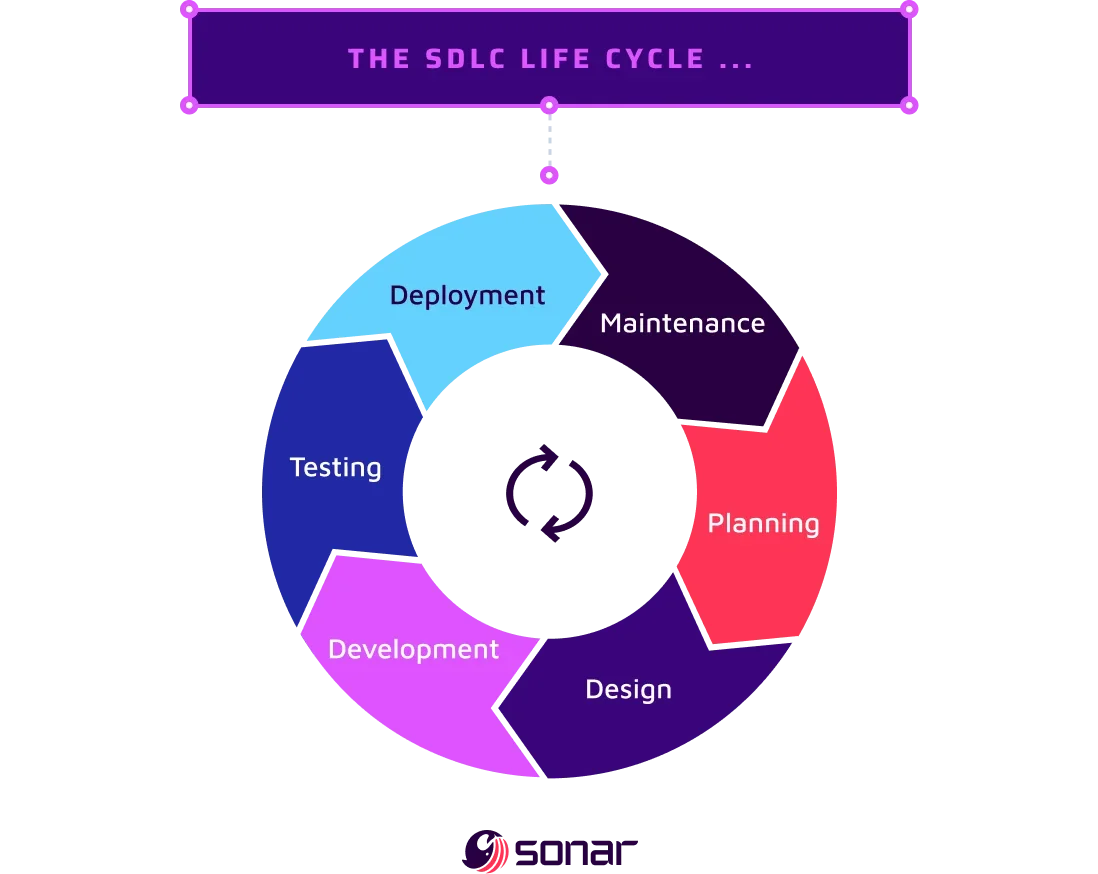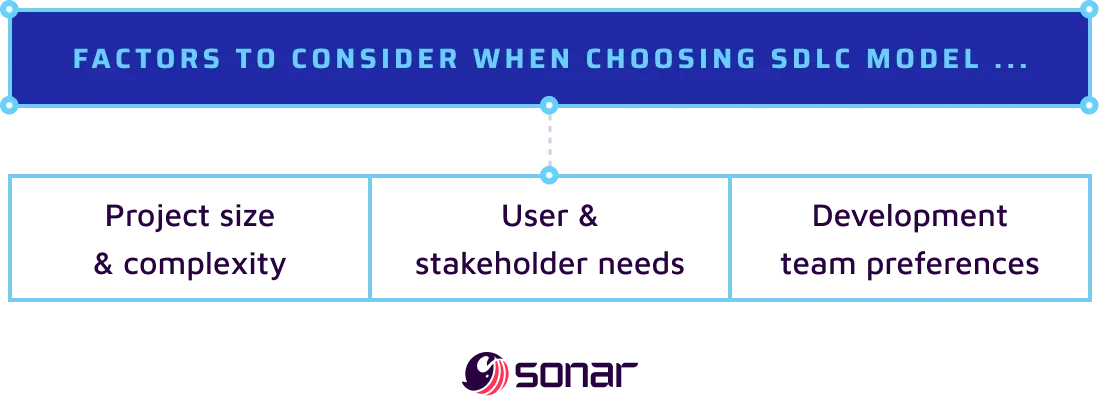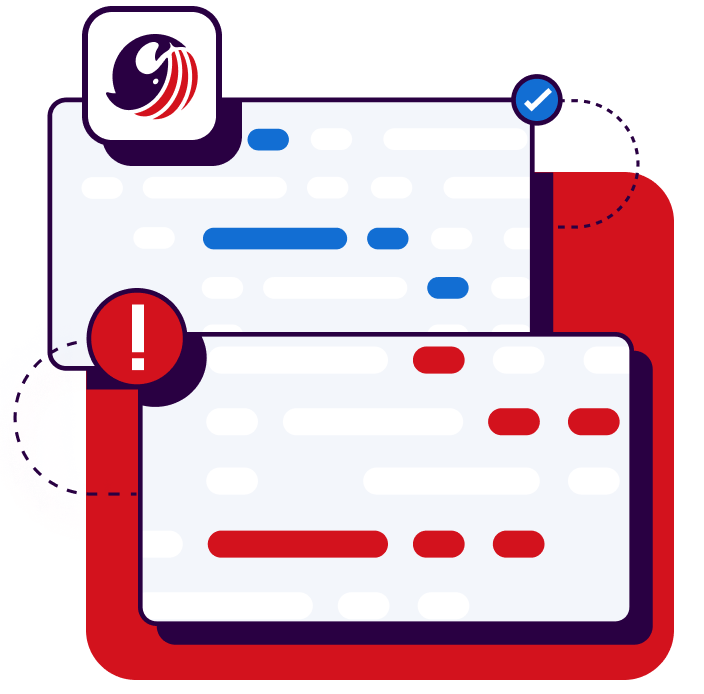What is SDLC?
The Software Development Life Cycle (SDLC) is a process that defines the tasks that software developers perform to plan, design, develop, test, and deploy software. It is a systematic approach to software development that aids in the creation of software to ensure that it is developed in a consistent and efficient manner.
The SDLC seeks to generate high-quality software that meets or exceeds customer expectations, is completed on time and under budget, and is efficient and robust.
The SDLC is not a strict process as the precise stages and activities might vary based on the size and complexity of the software project. The SDLC provides a generic framework for software development.
Why is SDLC important?
The software development lifecycle (SDLC) is an important process for software development because it provides an organized approach to developing software. The SDLC assists in ensuring that software is produced in a uniform and effective manner that satisfies the needs of users and stakeholders.

A few reasons why SDLC is important include:
Increased quality
The SDLC contributes to the development of high-quality software. This is due to the SDLC's planning, design, testing, and deployment phases. These phases aid in identifying and correcting flaws early in the development process, which can assist to enhance software quality.
Reduced costs
The SDLC can help to save money by preventing problems from entering production. This is due to the fact that faults may be spotted and repaired early in the development process before they become issues for consumers.
Increased productivity
The SDLC can help to increase productivity by offering a structured approach to software development. This can assist developers in focusing on the most important tasks and avoiding time-wasting activities.
Improved communication
The SDLC can help developers, stakeholders, and users communicate more effectively. This is because the SDLC comprises phases for gathering requirements, designing software, and testing software. These phases allow stakeholders and users to submit feedback, which can assist to improve the software's quality.
Compliance
The SDLC can assist in ensuring that software meets industry standards and laws. This is due to the SDLC's planning, design, testing, and deployment phases. These phases aid in ensuring that software is produced in accordance with standards and laws.
Maintenance and documentation
Detailed documentation of each phase of the SDLC provides for easier maintenance and modifications in the future. It keeps a record of each stage of the project, which can be useful for future reference and for making enhancements or changes to the software.
Customer satisfaction
The SDLC ensures that the finished product meets or exceeds customer expectations by offering a systematic approach to software development, resulting in increased customer satisfaction.
What is the SDLC life cycle?
The Software Development Life Cycle (SDLC) is a process that consists of a series of planned activities to develop or alter the software products which can be broken down into the following phases:

Planning (requirements gathering/analysis)
In this phase, the development team talks with stakeholders such as; the project manager, users, customers, and sponsors in order to gather all software requirements. Brainstorming sessions, interviews, surveys, or questionnaires could all be used to do this. The goal is to comprehend what the software is supposed to accomplish. The information assembled is documented as a requirement specification document.
Design
The system and software design is prepared in this phase based on the requirement specifications studied in the first phase. The design phase assists in defining the overall system architecture as well as describing hardware and system requirements including the software architecture, user interface, and data structures.
Development (coding/implementation)
This is the stage at which the actual software development creation process begins. This phase includes writing the code, testing it, and troubleshooting it.
Testing
The testing phase is when the software is exposed to several kinds of analysis in order to find and resolve issues and ensure that the product functions as planned. Unit testing, integration testing, system testing, acceptability testing, and other types of testing may be performed. Any flaws discovered are reported and corrected.
Deployment
The deployment phase is when the software is deployed to the production environment. This includes installing, configuring, and training users on the program. This could be done in stages (phased deployment), or in versions (incremental deployment).
Maintenance
At this phase, the software is maintained and issues will need to be resolved. This could include bug fixes, new features, or software updates to reflect changes in the system environment.
It is essential to note that these stages may differ slightly based on the SDLC model employed. The Agile model, for example, incorporates continuous iteration of development and testing into the software development process, whereas the Waterfall model sees them as independent and distinct SDLC stages.
What are SDLC models?
SDLC Models are guidelines used by software engineers to plan, design, build, test, and deliver software. They give an organized approach to software development that aids in the development of software in a reliable and effective manner.

There are numerous SDLC models available, each with a unique set of benefits and disadvantages. Among the most common SDLC models are:
Waterfall model
This is considered the most traditional and standard SDLC model. It has a progression that is linear, which means that each step of the development process begins only after the preceding phase is finished. Planning, design, implementation, testing, deployment, and maintenance are the normal steps. It's easy to learn and use, but its lack of versatility might be a disadvantage in larger projects. This model is appropriate for projects that are well-defined.
Iterative model
In this model, the software is developed in iterations (small sections) and is a cyclical approach to software development. Each iteration goes through the requirements, design, development, and testing phases. The primary concept here is to build a system in smaller steps (iterative) and in smaller time frames (incremental). This framework is suitable for projects with complicated requirements or in a constantly changing environment.
Spiral model
The spiral model is an iterative software development approach that involves risk assessment. The spiral model's phases are repeated several times, with each iteration enhancing the program and lowering the likelihood of faults. It is appropriate for huge, difficult, and costly projects.
V-Model (verification and validation model)
This model is an extension of the waterfall model. In addition to the waterfall model's linear sequence of stages, the V-Model includes a testing phase for each development phase. The phases are sequential with the testing phases running concurrently with the development phases. This model is appropriate for projects with a high risk of errors and when the requirements are clear and the cost and timeline aren’t key issues.
Agile model
The agile model is an incremental process of software development that promotes continuous iteration of development and testing throughout the software development life cycle of the project. The phases are overlapped with both the development and testing activities occurring concurrently unlike the Waterfall model. This model is suitable for projects with changing requirements or that require rapid development.
Factors to consider when choosing an SDLC model

Project size and complexity
Larger and more complicated projects may necessitate a more structured approach, such as the waterfall model. Smaller and less complex projects, such as the scrum model, may be able to employ a more agile methodology.
User and stakeholder needs
When selecting an SDLC model, the needs of the users and stakeholders should be taken into account. The waterfall approach, for example; may be a smart solution if users require a solid and trustworthy system. If consumers demand a system that can be changed to changing needs, the agile model may be a preferable option.
Development team preferences
When selecting an SDLC model, the particular needs of the development team should also be addressed. Some developers favor the waterfall model's regimented approach, while others prefer the agile model's more flexible approach.
What are SDLC tools and software?
Software development lifecycle (SDLC) software is a collection of tools and programs that assist software developers in the planning, design, development, testing, and deployment of software.
The tools can help to improve software development quality, lower expenses, and increase efficiency.
A handful of well-known examples include:
SonarQube Server
SonarQube Server is a clean code analysis tool that helps teams to identify and fix defects in their code. It can be used to scan code for security vulnerabilities, performance issues, and style violations. SonarQube Server is a popular tool for continuous integration and continuous delivery (CI/CD) pipelines and can be integrated with many popular CI/CD tools.
Jira
Jira is a popular project management application developed by Atlassian that is used for issue tracking, bug tracking, and agile project management. A popular agile team tool for implementing continuous integration and continuous delivery. It allows teams to track their progress and interact with one another. It supports Scrum, Kanban, and hybrid techniques and is very customizable.
Microsoft Azure DevOps
Azure DevOps, formerly known as Visual Studio Team Services (VSTS), provides a suite of capabilities that span the whole development lifecycle. It includes tools for task planning, code collaboration, and application deployment.
GitLab
GitLab is a code hosting and management application that enables team code collaboration within a single app. It provides continuous integration and deployment, as well as managing and tracking source code, bugs, and project progress.
Confluence
Confluence is a team collaboration tool that allows groups to share information and work on projects together. It is frequently used to create product documentation and to store requirements, documents, as well as test cases.
Docker
Docker is a platform for containerization that allows teams to package their applications and dependencies into independent containers. Docker allows you to decouple your apps from your infrastructure, allowing you to release software more quickly.
Selenium
Selenium is a popular open-source technology for automating web browsers that is beneficial during the SDLC testing phase. It can be used to assess the functionality, usability, and performance of online applications.
Ansible
Ansible is an open-source infrastructure-as-code tool that assists organizations in automating IT processes for software provisioning, configuration management, and application deployment.
Jenkins
Jenkins is an open-source automation server that aids in the automation of the software development process. It offers continuous integration and continuous delivery (CI/CD) functionality to build and test and deploys software.

